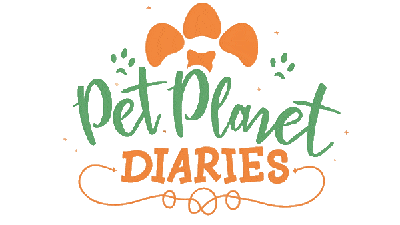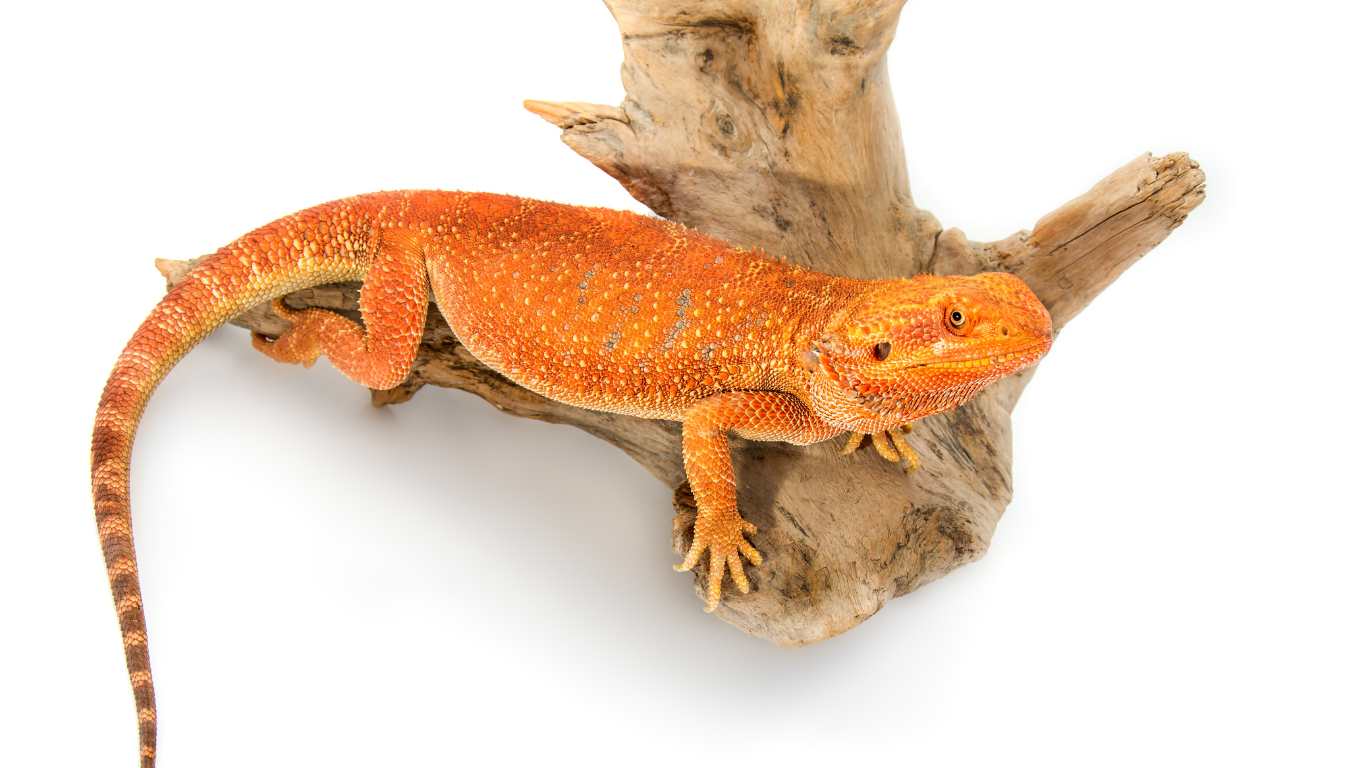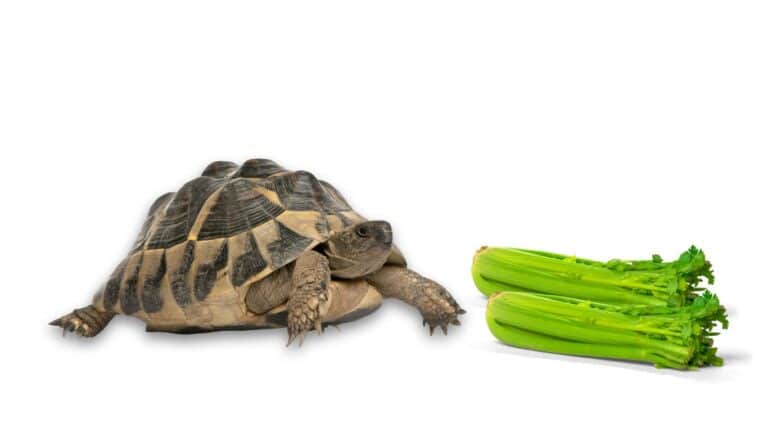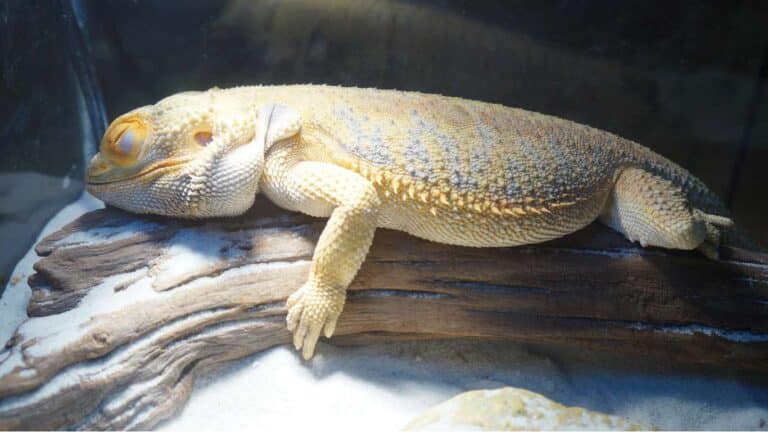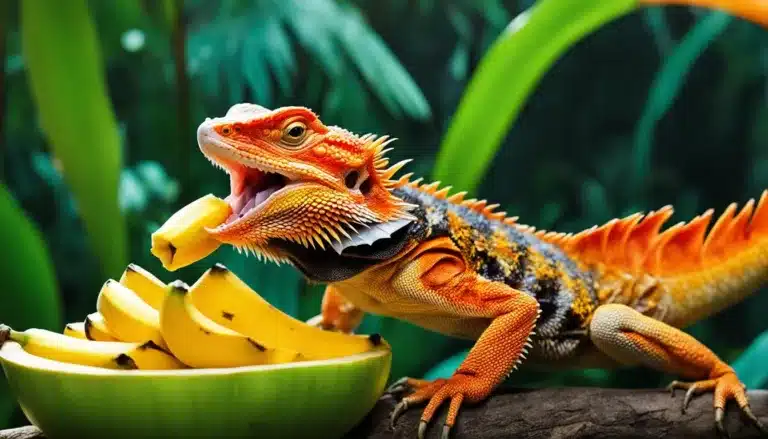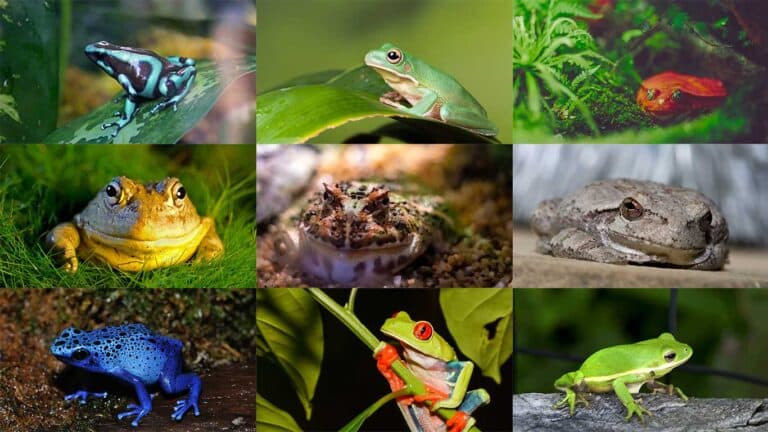Welcome to our guide on caring for and breeding red bearded dragons! Red bearded dragons are a popular color morph of the central bearded dragon and require specific care to thrive. Whether you’re a first-time owner or an experienced reptile enthusiast, this article will provide you with essential tips and information to ensure the well-being of your red bearded dragon.
Scales Of Insight: Must-Remember Tips
The Popularity and Price of Red Bearded Dragons
Red bearded dragons are highly popular among reptile enthusiasts due to their vibrant coloration. The stunning red hues make them unique and sought after as pets.
The price of red bearded dragons can vary depending on the specific morph you are interested in. Below, we have compiled a list of average prices for different red morphs:
| Red Morph | Price Range |
|---|---|
| Standard Red | $200-300 |
| Hypo Red Bearded Dragon | $200 |
| Super Red Bearded Dragon | $270 |
| Super Red Leatherback Bearded Dragon | $400 |
Please note that these prices are meant to provide you with an idea of the cost involved. There are other red morphs available in the market at different price points. Fancy bearded dragon morphs generally tend to cost more than the standard morphs.
If you are considering adding a red bearded dragon to your reptile collection, it’s important to research the specific morph you are interested in to get a better understanding of its availability and the average market price.
Where to Buy Young Red Bearded Dragons
If you’re interested in adding a young red bearded dragon to your reptile family, there are several options to consider. Whether you prefer meeting breeders in person or shopping online, you can find these vibrant dragons through various channels. Here are some places where you can buy young red bearded dragons:
Reptile Conventions
Reptile conventions, such as Repticon, provide an excellent opportunity to meet breeders directly and view a wide selection of red bearded dragons. These events often have reputable breeders showcasing their dragons, allowing you to ask questions and make informed decisions. You can find upcoming reptile conventions in your area by checking event listings and local reptile enthusiast groups.
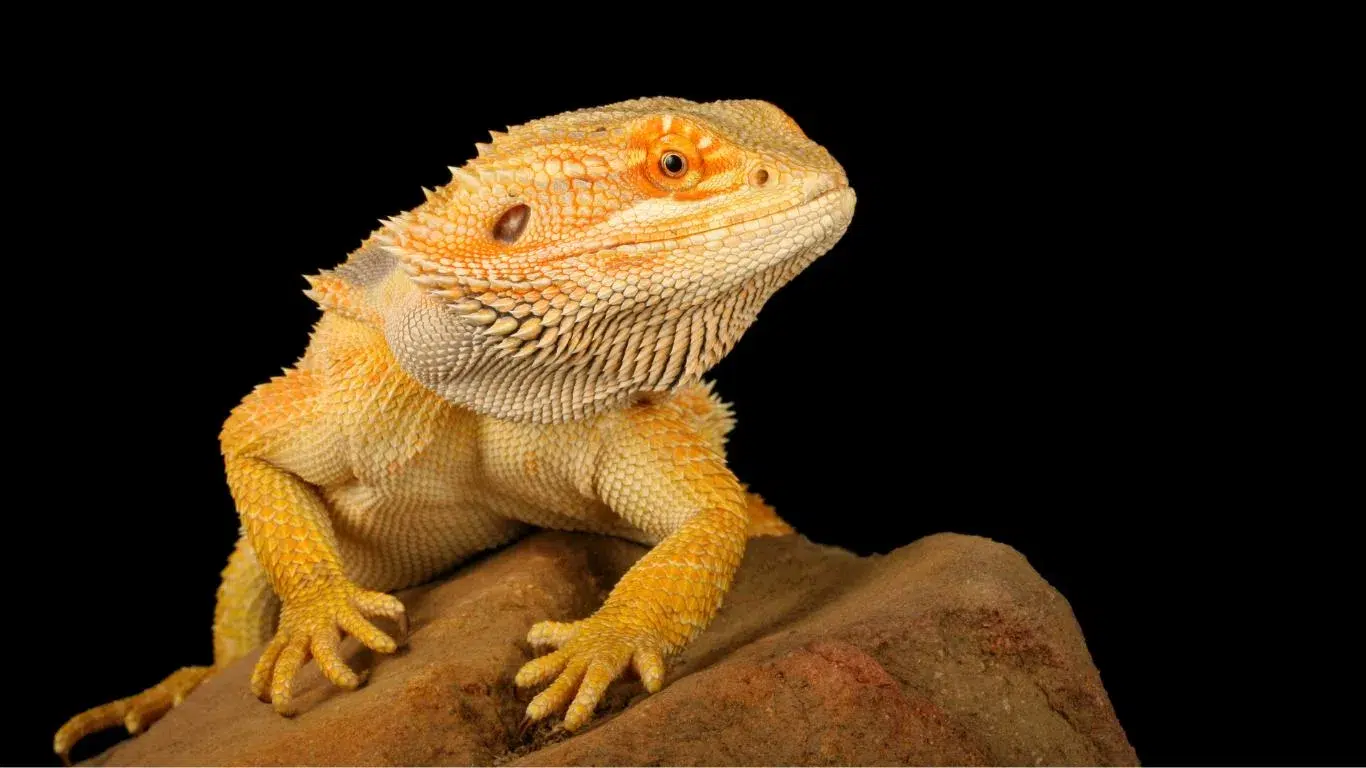
Online Marketplaces
For a convenient shopping experience, online marketplaces like Morphmarket offer a wide variety of red bearded dragon morphs, including the red morph. These platforms allow you to browse through listings, compare prices, and communicate with breeders or sellers. Make sure to read descriptions carefully and request additional information or photos if needed before making a purchase.
Buying Directly from Breeders
Another option is to buy directly from breeders, many of whom have websites or sell through reptile forums and groups. Buying from a breeder gives you the chance to learn more about the lineage, health, and care history of the red bearded dragon you’re interested in. It’s essential to research and ensure the breeder’s trustworthiness by checking reviews and getting feedback from other reptile owners before making a commitment.
Note: When purchasing any reptile, it’s crucial to consider the specific care needs and potential local regulations regarding ownership.
Size and Enclosure Setup for Red Bearded Dragons
Red bearded dragons, like their counterparts, typically grow to lengths ranging from 16 to 24 inches. To ensure their well-being, it’s crucial to provide them with an appropriate enclosure setup that meets their needs for substrate, temperature, humidity, lighting, and hides/decor.
Substrate Options
When it comes to substrate choices for red bearded dragons, there are several options to consider. Some common choices include sand, bark chips, ceramic tiles, alfalfa pellets, reptile carpet, rubber shelf liners, or newspaper/paper towels. Each option has its pros and cons, so it’s essential to research and select the one that suits your dragon’s requirements and your preferences.
Temperature and Humidity
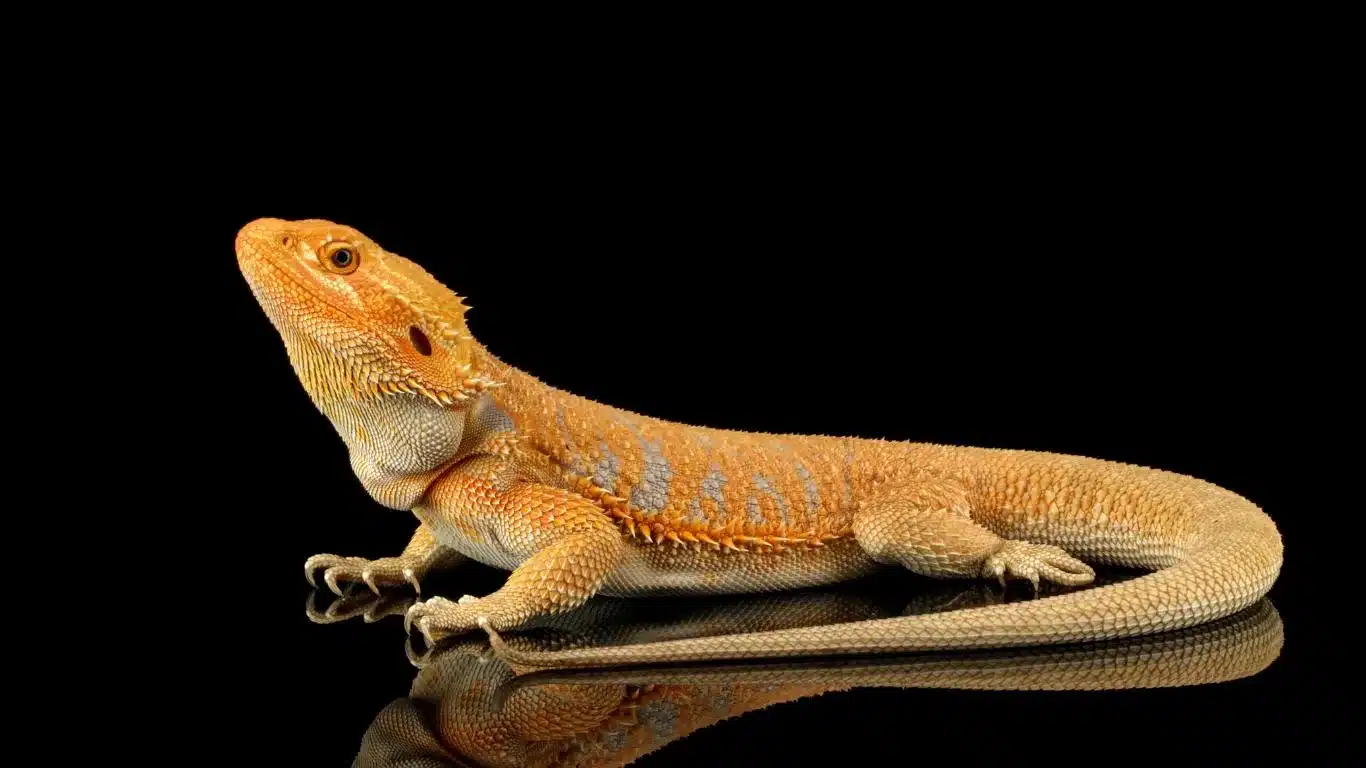
An ideal enclosure for red bearded dragons should provide a temperature gradient that includes a cool side, a basking spot, and an ambient temperature. This gradient allows the dragon to thermoregulate effectively. Maintaining proper humidity levels is also crucial to support their overall health and shed cycle.
Lighting
UVB lighting is essential for red bearded dragons as it helps them metabolize calcium and maintain healthy bones. A combination of UVB and UVA lighting is recommended to mimic their natural environment. It’s vital to provide the appropriate lighting fixtures and ensure they are positioned correctly within the enclosure.
Hides and Decor
Hides, bowls, and climbing surfaces are important for the enrichment and mental stimulation of red bearded dragons. These provide them with opportunities for exploration, exercise, and territorial behaviors. A well-decorated enclosure with suitable hides and decor helps create a comfortable and stimulating environment for your dragon.
| Size and Enclosure Setup | Options |
|---|---|
| Substrate | Sand, bark chips, ceramic tiles, alfalfa pellets, reptile carpet, rubber shelf liners, newspaper/paper towels |
| Temperature and Humidity | Cool side, basking spot, ambient temperature, proper humidity levels |
| Lighting | UVB and UVA lighting |
| Hides and Decor | Hides, bowls, climbing surfaces |
Feeding Guidelines for Red Bearded Dragons
Proper nutrition is essential for the health and well-being of red bearded dragons. Follow these feeding guidelines to ensure your dragon gets the right balance of vegetable matter and live food.
Adults:
Adult red bearded dragons should be fed a diet consisting of approximately 80% vegetable matter and 20% live food. This combination provides them with the necessary nutrients for optimum health. The following vegetables are safe and suitable for your dragon:
Safe Vegetables:
- Okra
- Kale
- Basil
- Leek
- Squash
- Radish
- Arugula
- Parsnip
- Cabbage
- Pumpkin
- Bok choy
- Zucchini
- Asparagus
- Bell pepper
- Turnip greens
- Collard greens
- Mustard greens
- Peeled cucumber
- Dandelion greens
- Raw artichoke heart
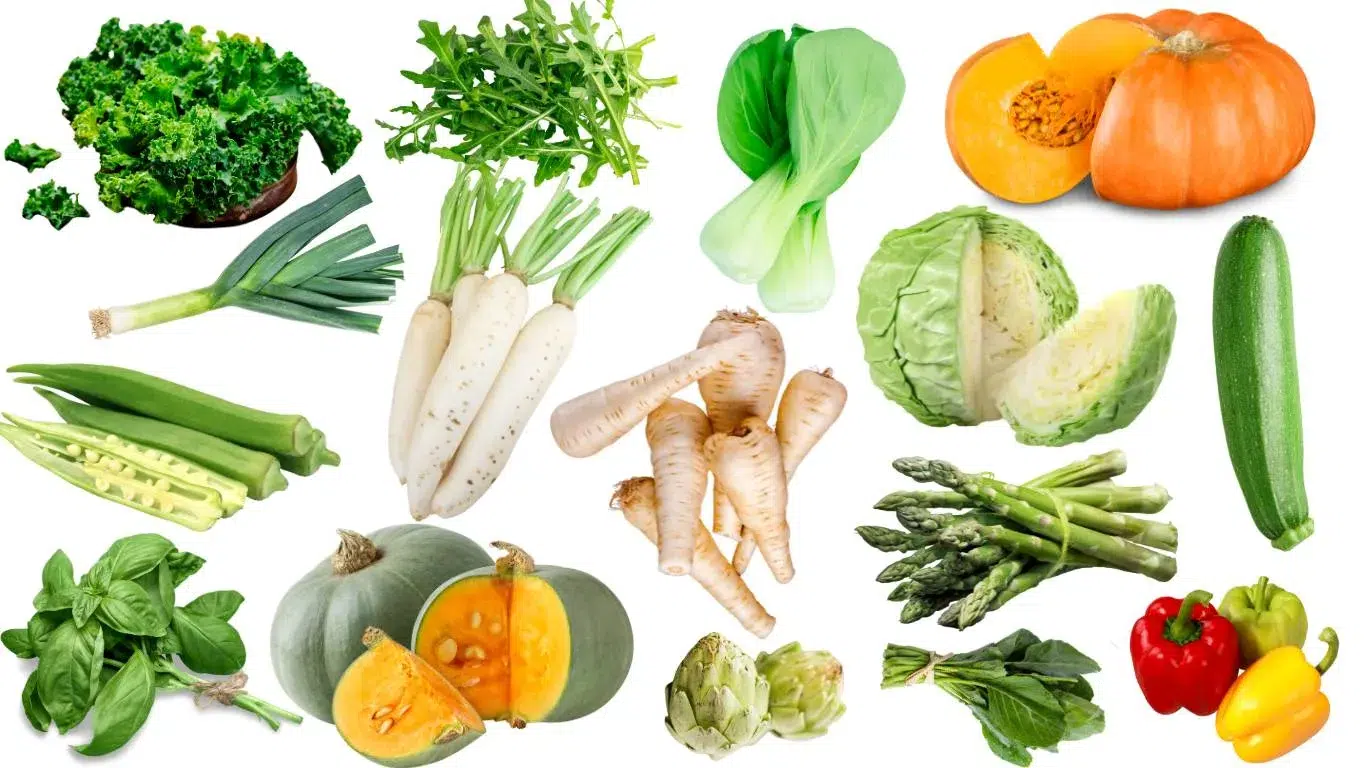
Moreover to vegetables, live foods and insects should also be a part of their diet. These provide a source of protein and variety for their nutritional needs. Offer a selection of live foods and insects, such as:
- Crickets
- Dubia roaches
- Hornworms
- Phoenix worms
- Super worms
- Silkworms
- Mealworms
- Waxworms
- Butter worms
- Grasshoppers
Ensure that the live food and insects are appropriately sized for your dragon’s age and size. Variety is key, so try to offer different options to prevent nutritional imbalances and maintain their interest in feeding.
Selecting and Caring for Red Bearded Dragons
When it comes to selecting a red bearded dragon, there are a few key factors to consider. First, take a look at the dragon’s morph, which refers to its unique coloration and pattern. Red bearded dragons come in various morphs, each with its own distinct appearance. Whether you prefer a standard red morph or a more exotic variation, such as the super red leatherback, choose a morph that catches your eye and matches your personal preferences.
Price is another aspect to consider when selecting a red bearded dragon. The cost can vary depending on the morph, with fancy morphs often carrying a higher price tag. Determine your budget and find a dragon that fits within your price range while still meeting your desired morph criteria.
The reputation of the breeder is crucial when choosing a red bearded dragon. Look for breeders who have a history of producing healthy and well-cared-for dragons. Reputable breeders prioritize the health and quality of their dragons, ensuring that you bring home a happy and thriving pet.
Caring for a red bearded dragon involves providing a suitable enclosure setup. Consider the size and temperature needs of your dragon to ensure their comfort. Create a comfortable and spacious habitat that mimics their natural environment. Provide hiding spots, climbing surfaces, and other enriching elements to keep them stimulated and happy.
Temperature and humidity control are essential for red bearded dragons. Maintain a temperature gradient within the enclosure, with a cooler side and a basking spot. Use a thermometer and hygrometer to monitor the habitat and make any necessary adjustments.
Proper lighting is crucial for the health of a red bearded dragon. Ensure they have access to UVB lighting to support their calcium absorption and overall well-being. Consider using both broad-spectrum lighting and a heat source to provide a balanced environment.
Feeding your red bearded dragon a balanced diet is key to their overall health and vitality. Provide a mix of live food and vegetables to meet their nutritional needs. Offer a variety of safe vegetables, such as kale, squash, and bell pepper, along with suitable live foods like crickets and mealworms.
Regular veterinary check-ups are essential for the ongoing care of your red bearded dragon. A reptile veterinarian can provide professional advice, perform health checks, and address any concerns or issues that may arise.
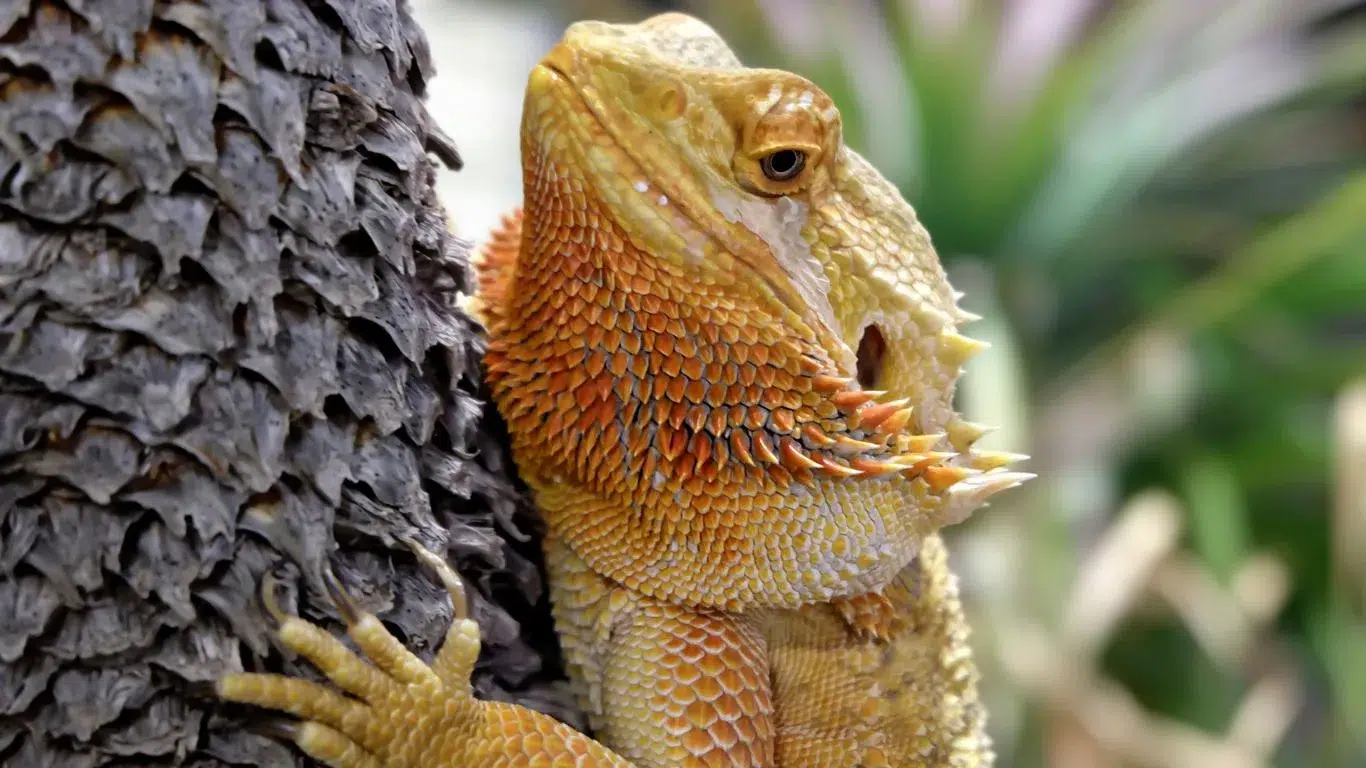
Handle your red bearded dragon with care and observe their behavior and health closely. Be attentive to any changes in appetite, behavior, or appearance, as these may indicate potential health issues that require attention.
Behavior and Temperament of Red Bearded Dragons
Red bearded dragons are known for their docile nature and are generally easy to handle. They have a calm temperament and rarely bite, making them suitable pets for reptile enthusiasts of all experience levels. However, it’s important to understand their behavior and cater to their needs to ensure their well-being and positive demeanor.
One unique behavior of red bearded dragons is their ability to puff up their “beard” when feeling threatened or displaying dominance. This behavior is a defense mechanism that helps them appear larger and more intimidating to potential threats. It’s fascinating to observe and demonstrates the dragon’s natural instincts in action.
To maintain a stress-free environment for your red bearded dragon and prevent undesired behaviors, it’s crucial to understand their body language. This includes recognizing signs of distress, such as tail twitching or body flattening, as well as indicators of contentment, such as relaxed body posture and alert curiosity. By paying attention to these cues, you can better cater to your dragon’s needs and ensure a harmonious living environment.
Providing a comfortable and enriching habitat is essential for promoting positive behavior in red bearded dragons. This includes offering a spacious enclosure with appropriate hides and climbing surfaces, where they can feel secure and engage in natural behaviors. Regular handling and socialization can also help build trust and strengthen the bond between you and your pet.
Overall, red bearded dragons are wonderful companions with their tranquil demeanor and fascinating behaviors. By understanding and responding to their unique needs, you can ensure your dragon remains happy and healthy.
Lifespan and Health Care for Red Bearded Dragons
Proper care and attention are essential for ensuring the health and longevity of your red bearded dragon. These reptiles have an average lifespan of around 8-10 years, but with the right care, they can live even longer.
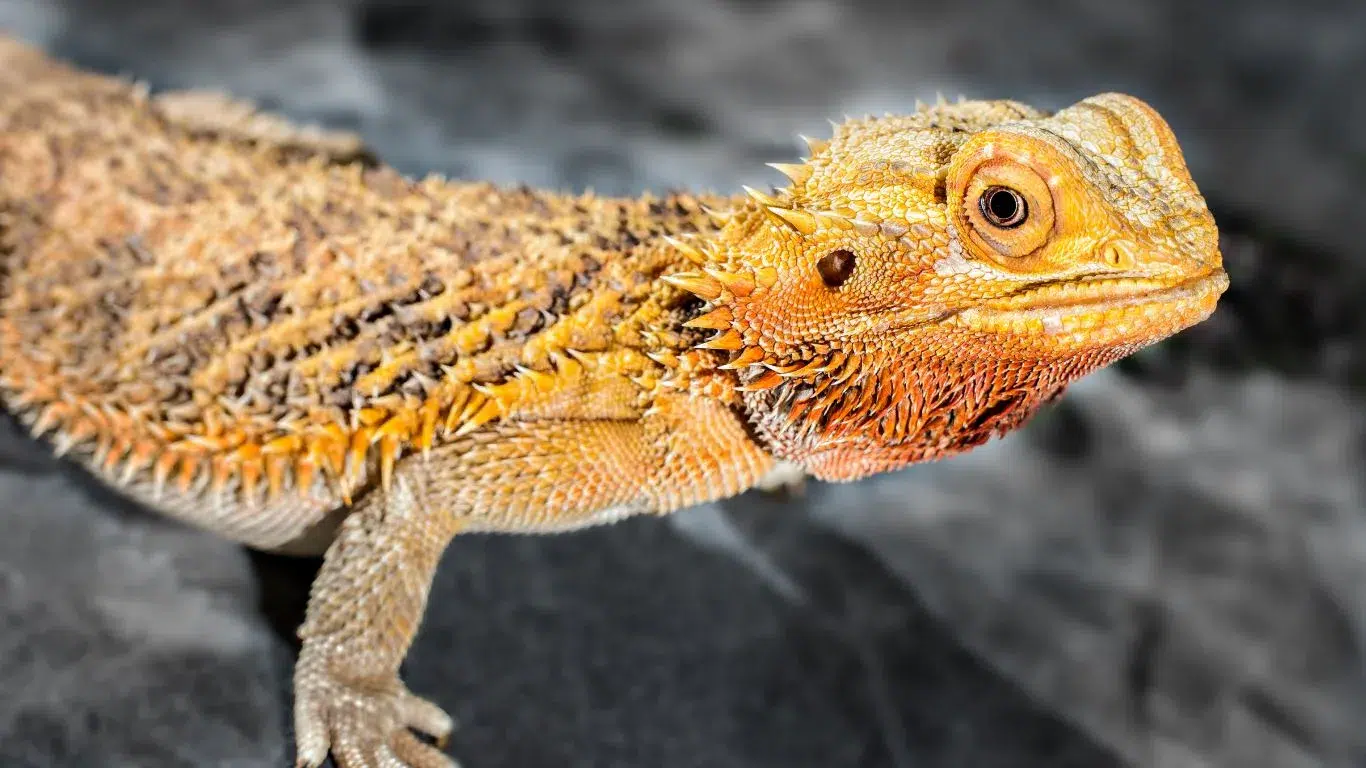
Regular veterinary check-ups are crucial for monitoring your dragon’s health. A qualified reptile veterinarian can provide necessary vaccinations, conduct routine examinations, and address any health concerns that may arise. They can also offer guidance on proper nutrition and care specific to red bearded dragons.
To maintain the health of your red bearded dragon, it’s important to create and maintain the appropriate enclosure conditions. This includes providing a spacious and temperature-controlled habitat that mimics their natural environment. An enclosure with suitable lighting, heating, and a comfortable substrate will contribute to the overall well-being of your dragon.
A balanced diet is another crucial aspect of red bearded dragon care. These reptiles require a combination of vegetables and live food. Providing a variety of safe vegetables, such as kale, squash, bell peppers, and turnip greens, will ensure they receive adequate nutrients. Live food options, including crickets, mealworms, and dubia roaches, should also be included in their diet.
Monitoring for signs of illness is important to catch any potential health issues early on. Be observant of any changes in appetite, behavior, or physical appearance. Any abnormalities should be promptly addressed by consulting with your veterinarian.
Remember, providing proper health care and attention to your red bearded dragon will contribute to a happy and healthy life for your scaly companion.
Breeding Red Bearded Dragons
Breeding red bearded dragons is an exciting endeavor for reptile enthusiasts. Understanding the reproductive cycle and providing the right environment and care are essential for successful breeding. Here’s a step-by-step guide to breeding these magnificent creatures:
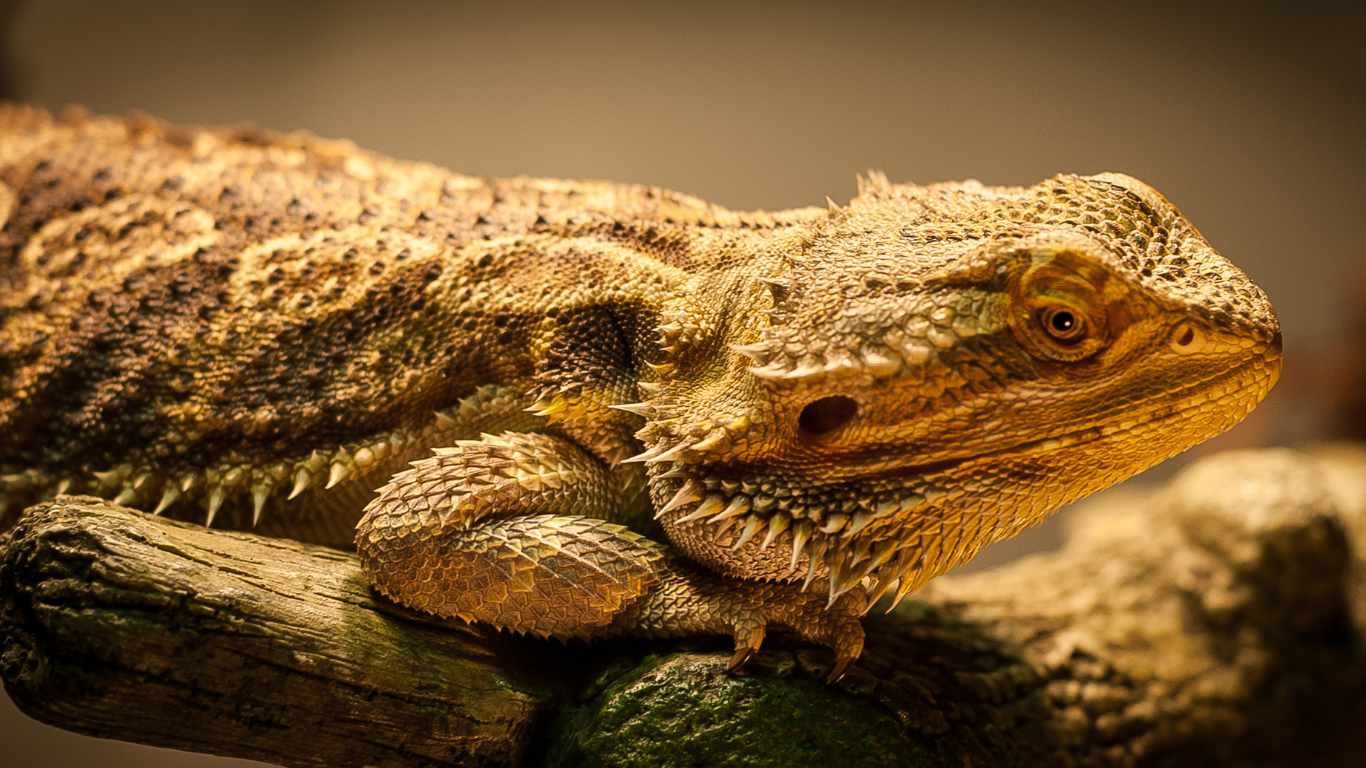
1. Understanding the Reproductive Cycle
Red bearded dragons, like other bearded dragon morphs, have specific breeding seasons. During this time, the female will enter an ovulatory cycle, where she will lay eggs if successfully bred by a male. It’s important to familiarize yourself with the typical breeding behavior and signs of readiness in both male and female dragons.
2. Creating the Right Breeding Environment
Setting up a suitable breeding environment is crucial for encouraging breeding behavior and ensuring the health of the dragons. The breeding enclosure should provide ample space for both the male and female dragons and include essential elements such as hiding spots, basking areas, and appropriate substrate.
3. Introducing a Male and Female Dragon
When the female is displaying signs of readiness, such as an increased appetite or digging behavior, it’s time to introduce her to a compatible male dragon. Place the male and female in the breeding enclosure together, monitoring their interactions closely. Ensure that both dragons are mature and in good health before attempting breeding.
4. Providing Appropriate Care for Eggs and Hatchlings
After successful breeding, the female will lay a clutch of eggs within a few weeks. These eggs should be carefully removed from the breeding enclosure and placed in an incubator set to the correct temperature and humidity. Regular monitoring of the eggs is necessary to ensure their development and to prevent any issues such as mold or dehydration. Once the eggs hatch, the hatchlings should be provided with appropriate care and housing to ensure their healthy growth.
5. Producing Morphs of Red Bearded Dragons
Breeders often focus on producing specific morphs of red bearded dragons to cater to the demands of enthusiasts and collectors. By carefully selecting breeding pairs with desired traits, breeders can work towards producing offspring that exhibit the specific morph characteristics they desire.
Breeding red bearded dragons requires careful planning, observation, and dedication. It can be a rewarding experience for those passionate about these beautiful reptiles.
| Benefits of Breeding Red Bearded Dragons | Challenges of Breeding Red Bearded Dragons |
|---|---|
| Opportunity to contribute to the conservation of the speciesPotential financial benefits from selling offspringChance to produce unique morphs | Requires significant time and effortProper care and monitoring of eggs and hatchlingsEnsuring the health and well-being of breeding dragons |
Join the Pet Planet Diaries
Sign up for our newsletter to get the latest tips, stories, and exclusive insights into the wonderful world of pets.
Final Remarks
Red bearded dragons are a highly sought-after color morph of the central bearded dragon. To ensure their well-being and thrive as pets, proper care and attention are essential. This includes providing the right enclosure setup, maintaining appropriate temperature and humidity levels, ensuring proper lighting, and offering a balanced diet.
Selecting a red bearded dragon from reputable sources, such as trusted breeders, is crucial. Regular veterinary care is also important for their overall health and longevity.
For those interested in breeding red bearded dragons, understanding their reproductive cycle and creating the optimal breeding environment is key to successful breeding. Proper care for the eggs and hatchlings is necessary for their well-being and development.
With the right care and attention, red bearded dragons can be vibrant and fascinating reptile companions, bringing joy and wonder to their owners. Whether you are considering adopting a red bearded dragon or exploring breeding possibilities, following these care and breeding tips will help you provide the best possible environment for these beautiful reptiles.
FAQ
What is a red bearded dragon?
A red bearded dragon is a color morph of the central bearded dragon that has vibrant red coloration.
How much does a red bearded dragon cost?
The price of a red bearded dragon can vary depending on the morph, with average prices ranging from $200 to $900 for different morphs.
Where can I buy a young red bearded dragon?
You can purchase a red bearded dragon from reptile conventions, online marketplaces like Morphmarket, or directly from breeders.
How big do red bearded dragons grow?
Red bearded dragons grow to lengths of 16-24 inches, which is the same size as other bearded dragons.
What is the proper enclosure setup for red bearded dragons?
The enclosure for red bearded dragons should have the right substrate, temperature, humidity levels, lighting, and hides/decor to meet their needs.
What should I feed my red bearded dragon?
Red bearded dragons require a diet consisting of 80% vegetable matter and 20% live food for adults, while babies require 80% live food and 20% vegetables. Safe vegetables include okra, kale, basil, squash, and more.
How do I select and care for a red bearded dragon?
Selecting a red bearded dragon involves considering the morph, pricing, and the reputation of the breeder. Caring for one involves providing the appropriate enclosure setup, temperature control, lighting, and a balanced diet.
What is the behavior and temperament of red bearded dragons?
Red bearded dragons are generally docile and easy to handle. They rarely bite and are known for their calm temperament.
How long do red bearded dragons live?
The average lifespan of a red bearded dragon is around 8-10 years, but they can live longer with proper care.
How do I breed red bearded dragons?
Breeding red bearded dragons involves understanding their reproductive cycle, creating the right breeding environment, introducing a male and female dragon, and providing appropriate care for the eggs and hatchlings.
